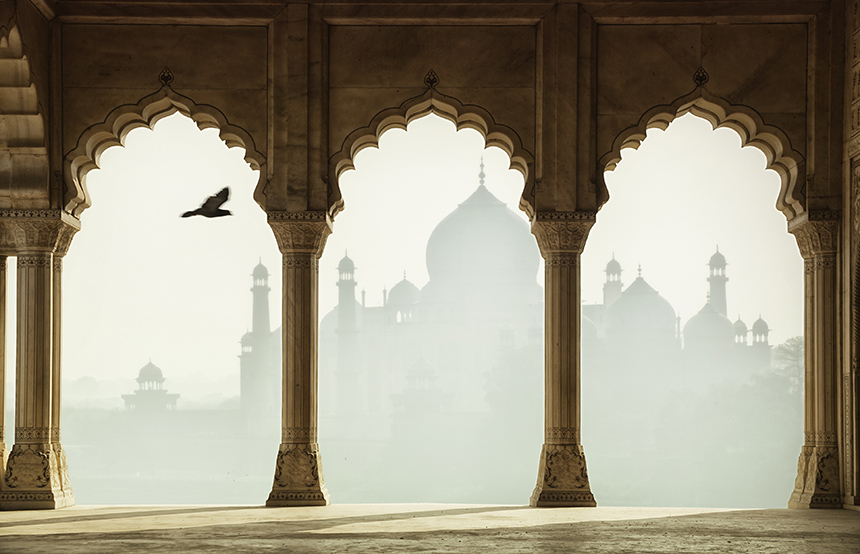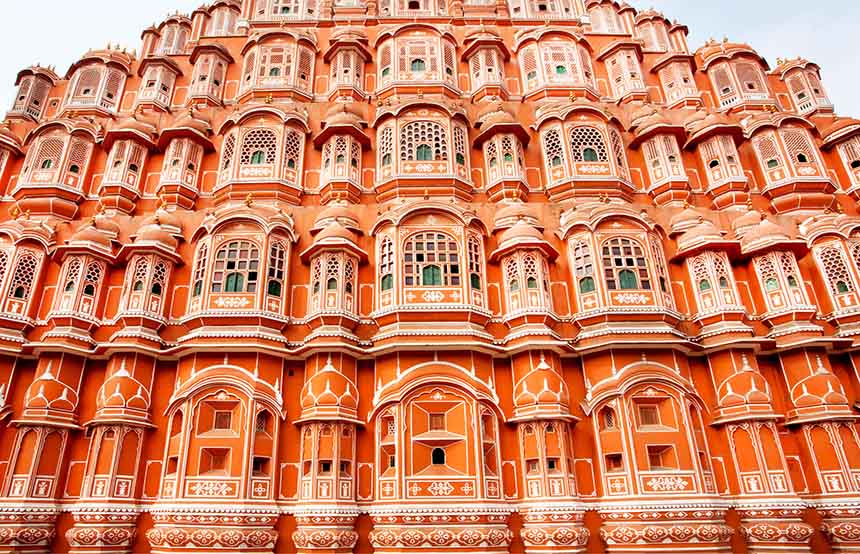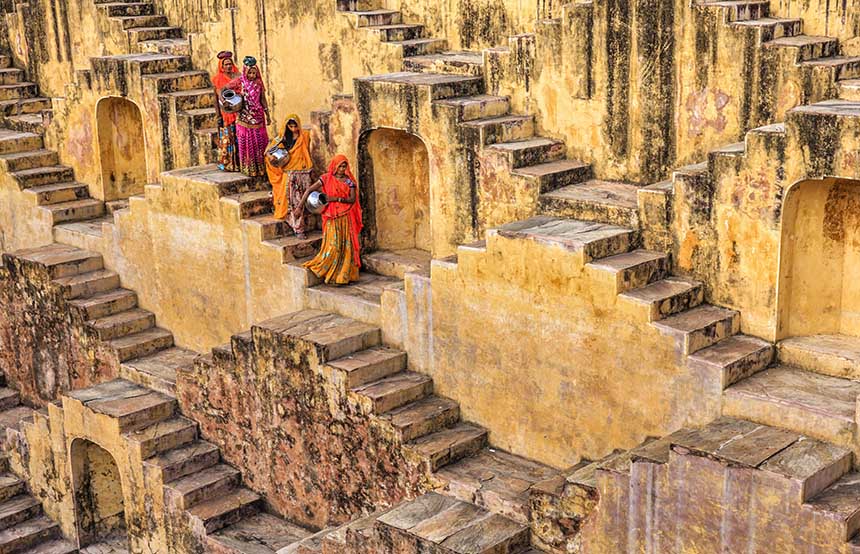For generations, the Taj Mahal has acted as the poster child of historic India, encapsulating the architectural prowess of the nation and attracting millions of visitors every year. While this Wonder of the World is doubtless worthy of its the attention it receives, there are numerous other historic sites in India that reveal fascinating tales of yesteryear. As part of your trip to India, you can walk down the palatial steps of ancient wells designed to evade droughts, gingerly step into mysterious caves harbouring the birth of Indian art or enjoy a view across bustling Jaipur from the exact same spot as the royal women of 19th-century India. Read on to discover all of our favourite historic sites in India…
The Taj Mahal
What better way to kick off our list of the best historic sites in India than with one of the most iconic and inimitable sites in all of South Asia: the Taj Mahal. While it’s quite well known that this remarkable site is steeped in historical love - with the Mughal Emperor Shah Jahan commissioning the construction of this tomb in 1631 after the death of his favourite wife, Mumtaz Mahal - it is lesser known that the Taj Mahal also experienced its fair share of historical dramas. During the construction of the mausoleum, the Emperor decreed that the hands of the some 20,000 artisans working were to be severed upon completion, in order that no building ever be built more beautiful. Enacting a silent revenge, many workers conspired to create a hole in the roof of the central structure, with the hope of seeing the building collapse shortly after completion. Alas, the conspiracy failed, with the tomb still standing today in all its glory. We can arrange for you to enjoy a guided tour of the Taj Mahal at sunrise or sunset, during which you can learn about many other legends while soaking in the unparalleled beauty of the marble architecture.

Agra Fort
Located just under two miles from the Taj Mahal, the Agra Fort offers a different perspective of the neighbouring mausoleum, as well as an altogether different history of the region. The historical richness of the sandstone- walled city lies in its dynastic heritage: since its construction in 1475 it has been owned by the Lodhi Dynasty, Mughal Empire, and British Empire. The walled city lost popularity after the British moved the colonial capital to Calcutta; nevertheless, since independence the city has regained its former glory, with visitors now coming from all over the world to admire the architecture, history and beauty of one of the most unmissable historic sites in India.
Hawa Mahal
Built entirely in red sandstone to blend in perfectly in the ‘“Pink City’” of Jaipur, Hawa Mahal offers visitors the chance to step into the shoes of the royal women of 19th-century India. During the reign of the Kachhawah dynasty, the many wives of the ruler and the political elite were merely tokens used to form bonds with important families. The women were restricted from being seen in public, instead being forced to live out their lives in the women’s chamber of the city palace. Hawa Mahal - with its 950 windows - was built in 1799 as a sort of architectural veil that allowed the royal women of the palace to view the bazaar and the busy streets below without being seen. We particularly recommend arriving early in the morning, as the sun rises beautifully reflects on the intricate external facade.

Adjunta Caves
And finally, those keen to step even further back into history need not look beyond the Adjunta Caves. In 1819, a British hunting party were busy tracking down a tiger in the Wagurna River valley in north-central Maharashtra when they came across something that made them forget about the tiger altogether. Hidden behind thick vegetation was a collection of thirty Buddhist temples and monasteries carved into a granite rock face over 2,000 years ago. As they nervously set foot inside the network of caves, they stumbled across yet another phenomenon: a series of ancient paintings depicting Buddhist legends and gods. Today you can step into the shoes of an explorer and rediscover these beautiful caves (twenty-six are open to visitors) at your own pace or with a guide.

Chand Baori
Before the comparatively contemporary regal problems of how to prevent a building as beautiful as the Taj Mahal from ever being built again, the leaders of medieval India faced a more pressing issue: how to source water. A thousand years ago, water in the arid region of Rajasthan was not easy to come by. Step wells dug deep into the ground were therefore a source of pride throughout the region and were designed and decorated accordingly. Chand Baori was commissioned by King Chanda during the 9th ninth century, with the purpose of being so big and so deep that it would provide water for the whole year. It was a resounding success; the resulting step well is 100-feet deep, with 3,500 narrow and intricately-designed steps over thirteen 13 stories. Unfortunately it is no longer a functioning water source, however it still makes for a beautiful historic site to visit when travelling between Jaipur and Agra.













